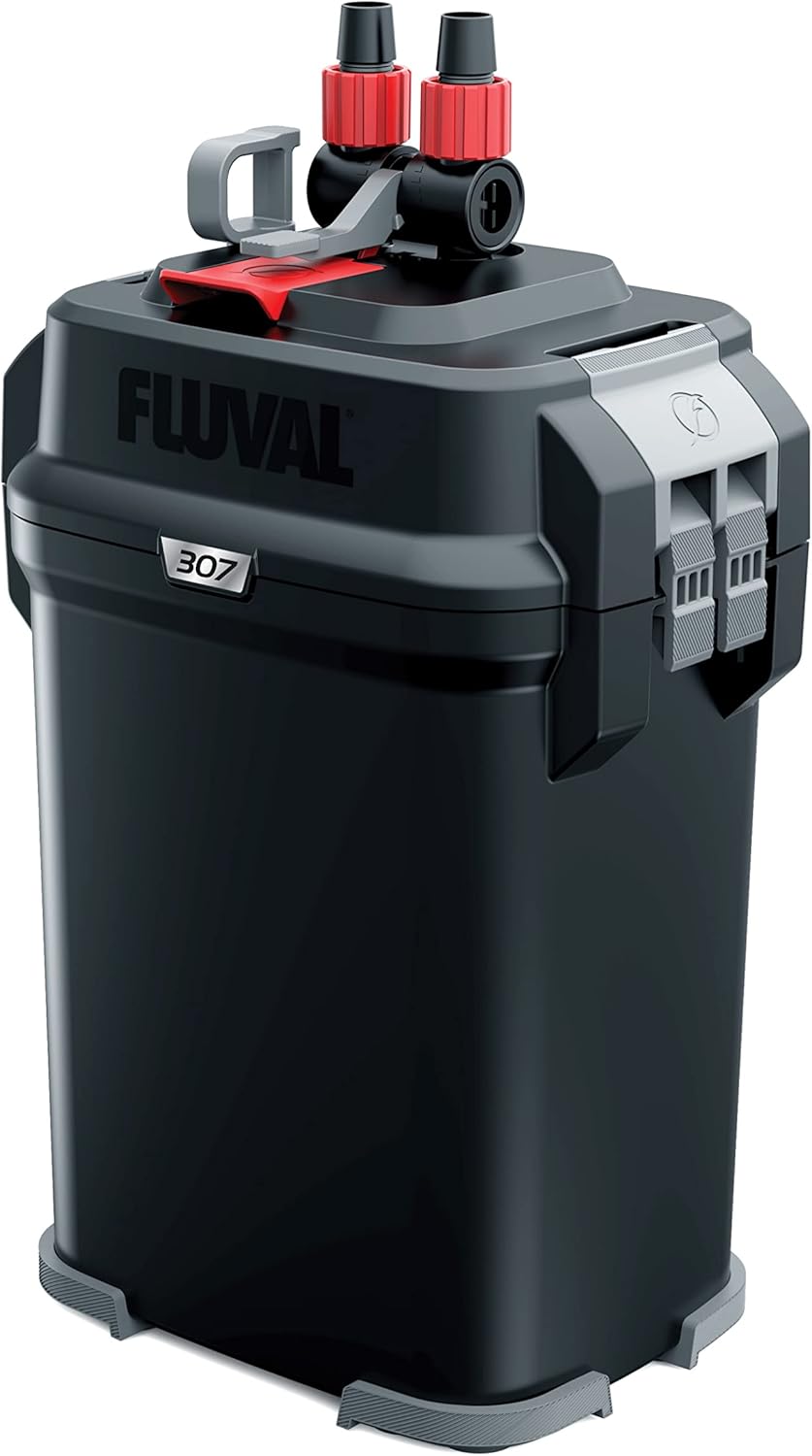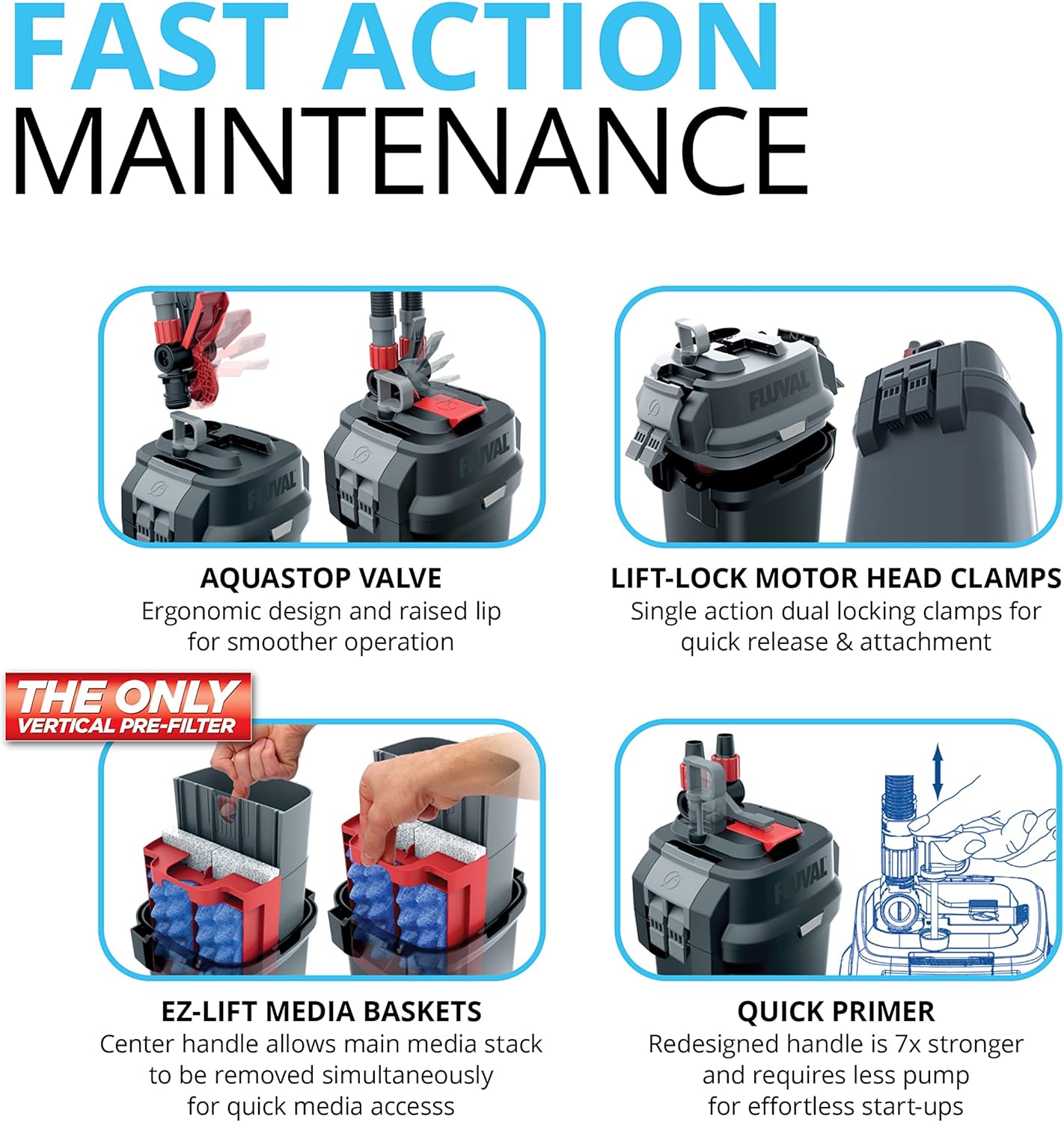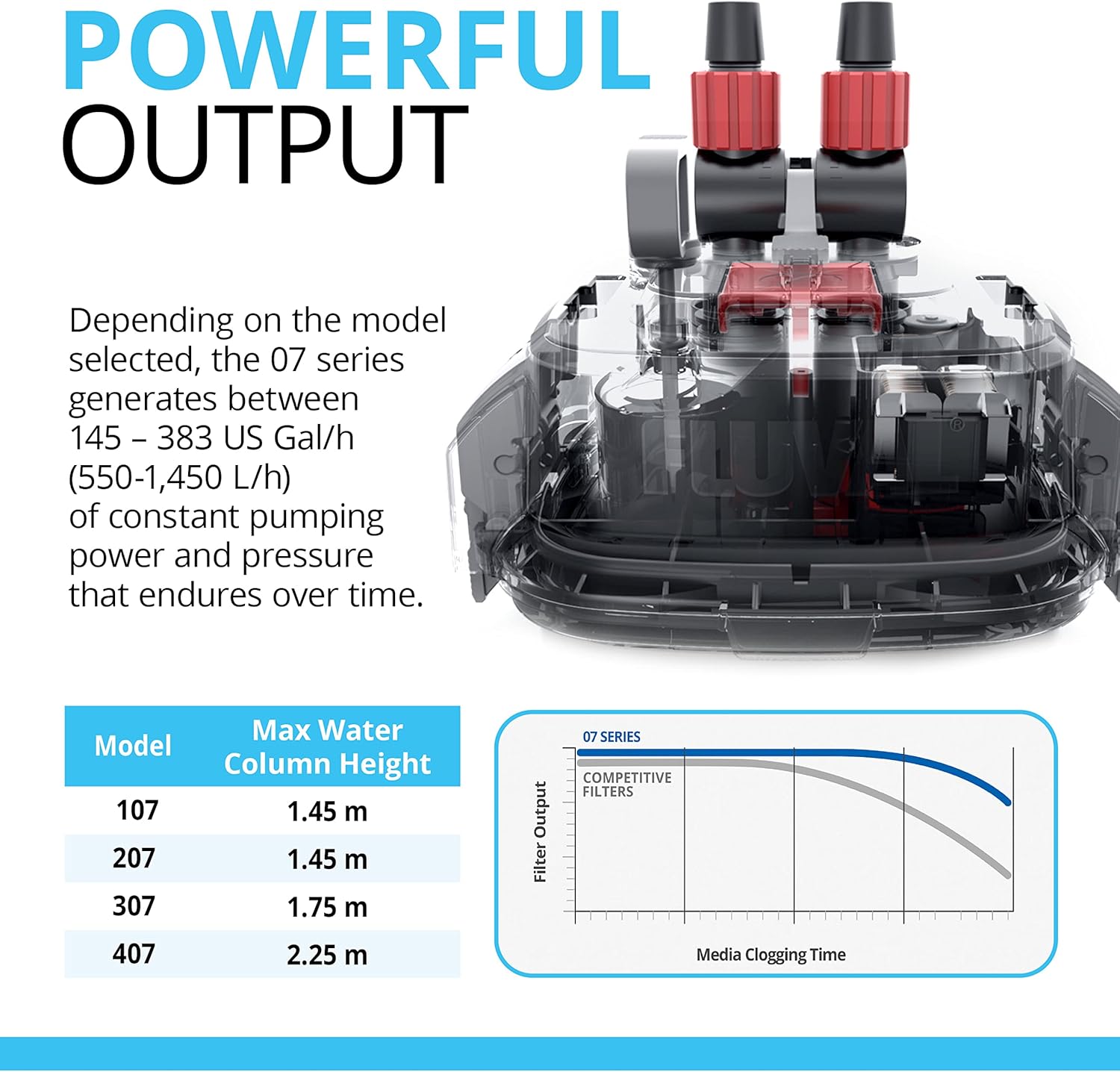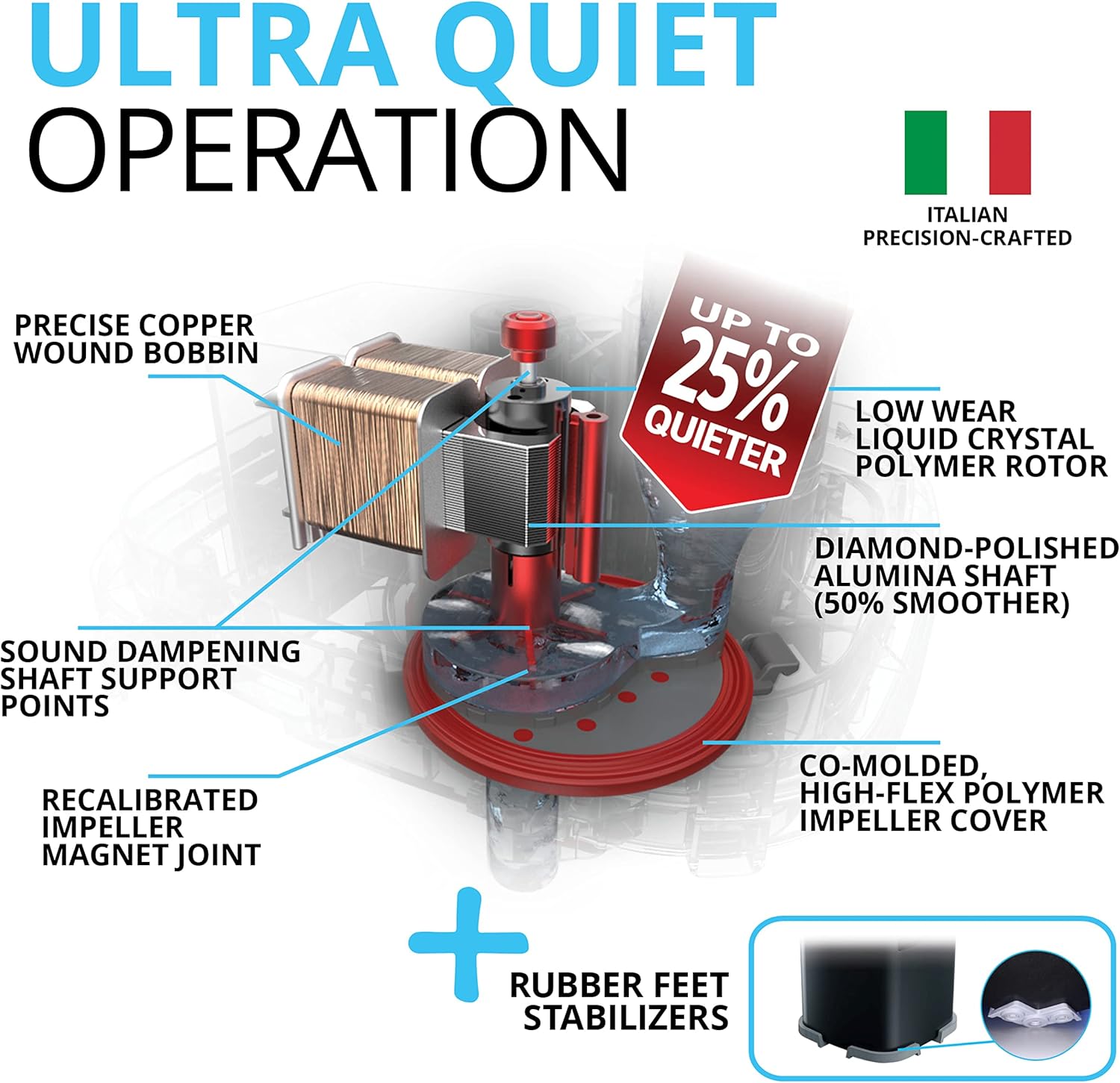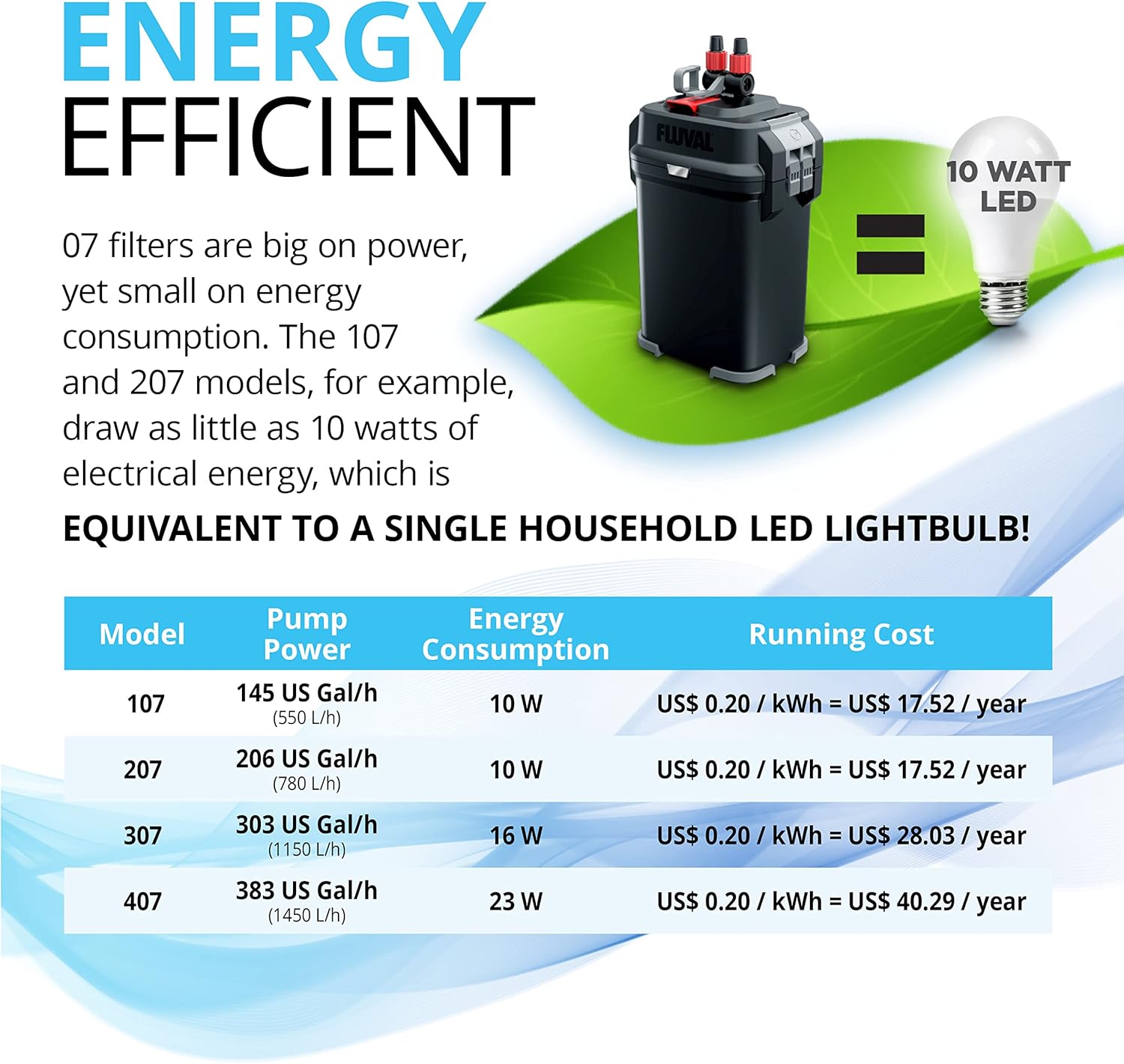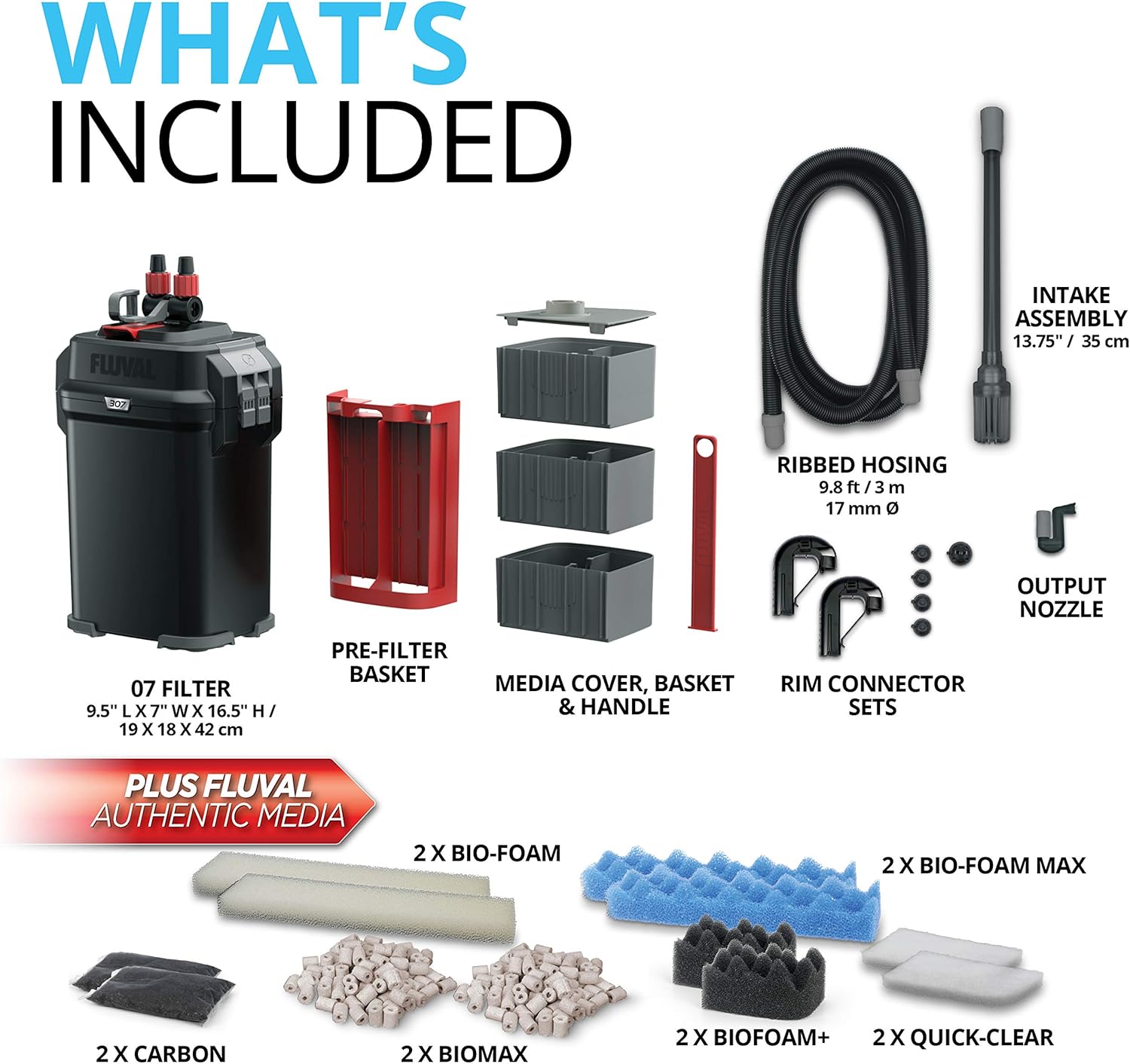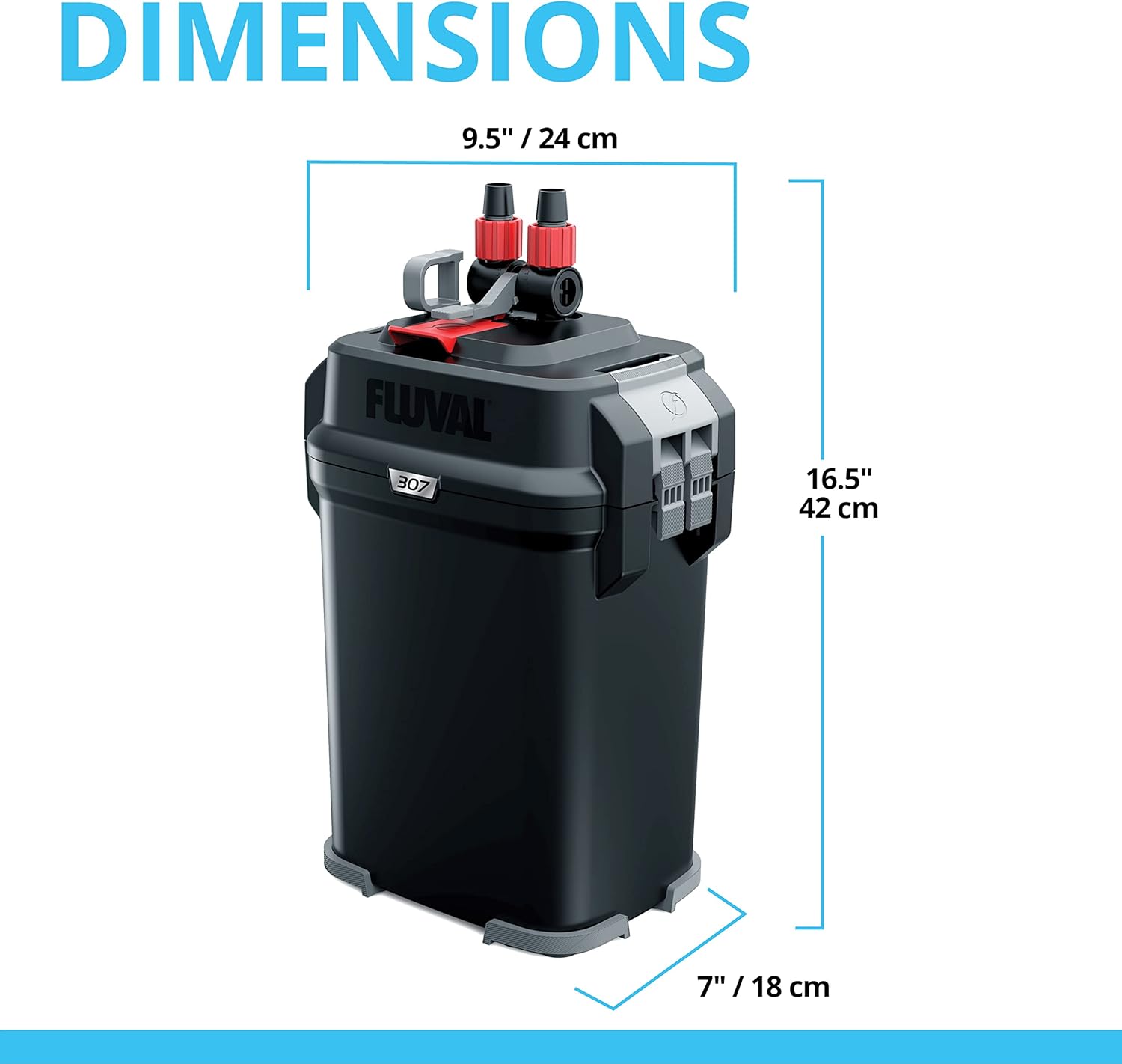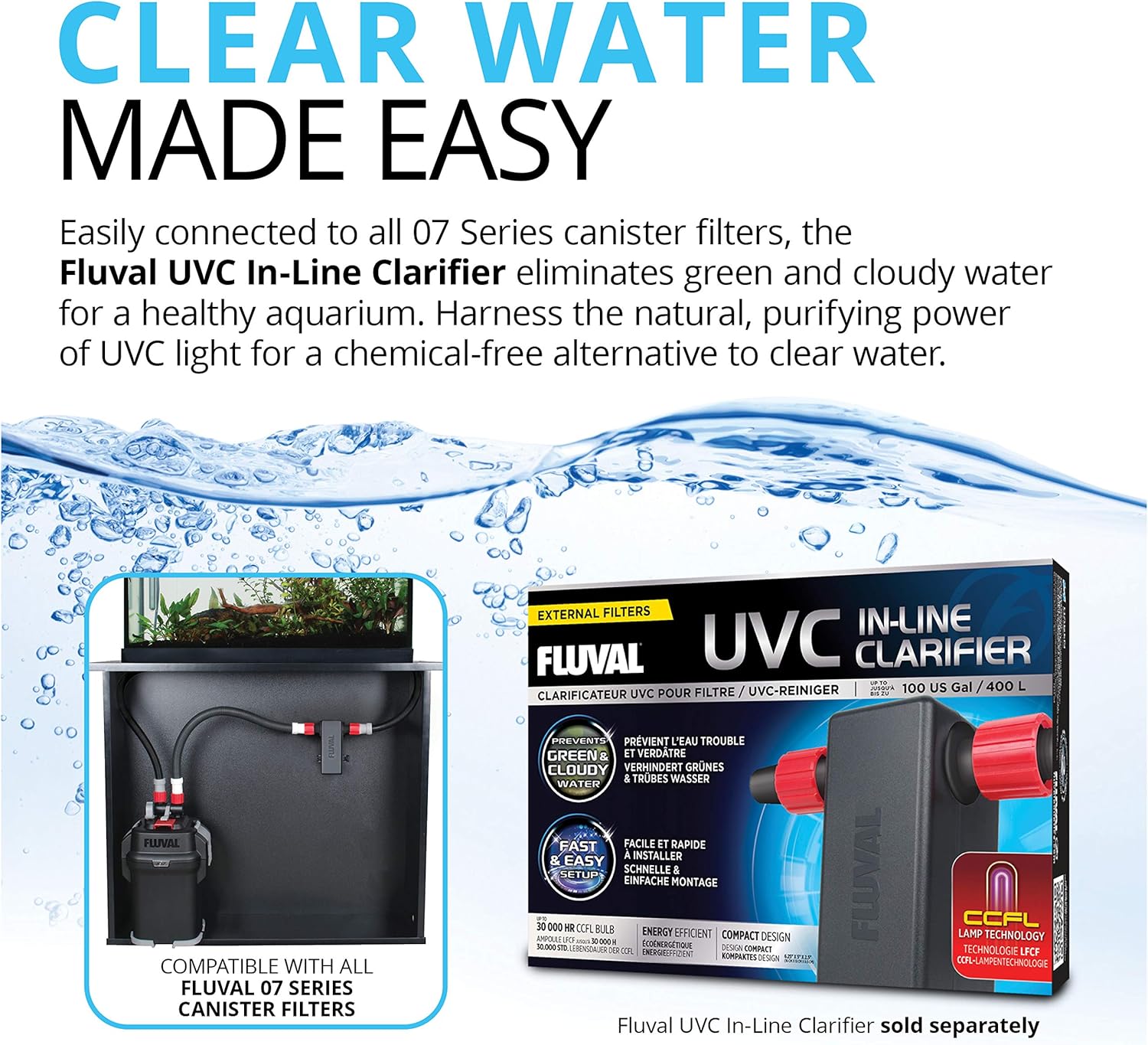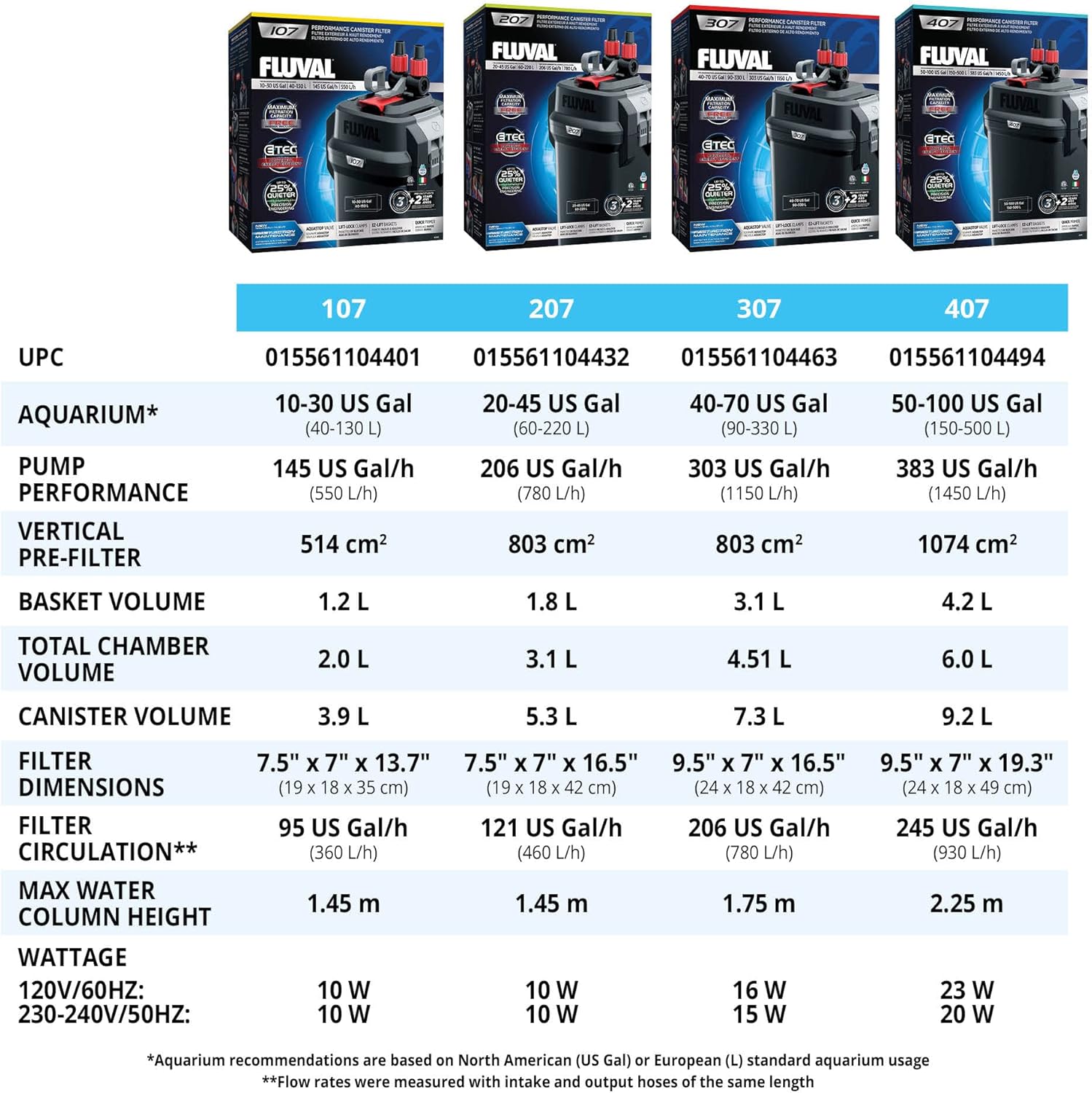
Black Friday Fluval 307 Perfomance Canister Filter – Fish Tank Filter Review – Oemiu
Black Friday Fluval 307 Performance Canister Filter – Fish Tank Filter Review
The Fluval 307 canister filter has carved a niche for itself in the aquarium hobby as a reliable, efficient, and relatively quiet filtration solution for medium to large-sized aquariums. With Black Friday around the corner, many aquarists are eagerly awaiting potential deals on this popular filter. This review delves deep into the Fluval 307, examining its features, performance, setup, and overall value to help you determine if it’s the right fish tank filter for your aquatic needs. We’ll explore its capabilities beyond the manufacturer’s specifications, consider user experiences, and weigh the pros and cons, offering a comprehensive perspective to inform your purchase decision, especially with potential Black Friday discounts in mind.
Unboxing the Powerhouse: Features and Specifications of the Fluval 307
The Fluval 307 isn’t just a box filled with filtration media; it’s a meticulously designed system engineered to provide multi-stage filtration. Before diving into the performance aspects, let’s break down the key features and specifications that make this canister filter stand out. One of the first things you’ll notice upon unboxing is the build quality. Fluval has consistently delivered durable products, and the 307 is no exception. The canister itself is constructed from robust plastic, designed to withstand the constant pressure of water and the rigors of regular maintenance.
Beyond the physical build, the internal components are equally important. The Fluval 307 utilizes a multi-stage filtration process, incorporating mechanical, chemical, and biological filtration. This ensures the removal of particulate matter, harmful chemicals, and the establishment of beneficial bacteria colonies. The inclusion of AquaStop valves is another noteworthy feature. These valves allow you to disconnect the filter from the aquarium without having to drain the entire system, significantly simplifying maintenance tasks. The improved motor technology used in the 07 series aims for quieter operation and increased energy efficiency, which is a welcome change compared to some earlier models. The priming mechanism has also been refined, making initial setup and restarts after cleaning much easier. These features collectively contribute to a user-friendly experience, even for those relatively new to canister filters. While some filters may require specialized tools or complicated procedures, the Fluval 307 is designed with accessibility and ease of use in mind. This emphasis on user-friendliness, combined with its robust performance, makes it a popular choice for both beginner and experienced aquarists. Let’s have a look at some of the specs:
| Feature | Specification |
|---|---|
| Aquarium Size | 40-70 US Gallons (150-265 Liters) |
| Pump Output | 303 US GPH (1150 LPH) |
| Filter Circulation | 207 US GPH (780 LPH) |
| Filter Volume | 1.6 US Gallons (6 Liters) |
| Number of Filter Baskets | 3 |
| Wattage | 15 Watts |
| Dimensions (L x W x H) | 7.5 x 7 x 16.5 inches |
| Media Included | Bio-Foam, BioMax, Carbon |
Performance in Action: Real-World Testing and Effectiveness
While specifications and features provide a good overview, the true test of any fish tank filter lies in its real-world performance. The Fluval 307 is designed to handle aquariums in the 40-70 gallon range, but its actual performance can vary depending on factors such as fish load, feeding habits, and plant density. In lightly stocked tanks with regular water changes, the 307 can easily maintain pristine water quality. However, in heavily stocked tanks or those with messy fish, more frequent maintenance may be required. One of the key indicators of a filter’s effectiveness is its ability to remove particulate matter. The mechanical filtration stage of the Fluval 307, typically consisting of foam pads, does an excellent job of trapping debris, uneaten food, and other suspended particles. This results in clearer water and reduces the buildup of detritus, which can contribute to poor water quality. The chemical filtration stage, often involving activated carbon, is crucial for removing dissolved organic compounds, medications, and other harmful chemicals. The effectiveness of the carbon depends on its quality and the frequency with which it’s replaced. Fluval provides their own brand of carbon, but many aquarists experiment with different brands to find what works best for their specific needs. The biological filtration stage is arguably the most important, as it’s responsible for converting harmful ammonia and nitrites into less toxic nitrates. The Fluval 307 includes BioMax ceramic rings, which provide a large surface area for beneficial bacteria to colonize. A well-established biological filter is essential for maintaining a healthy and stable aquarium environment.
During testing, the Fluval 307 demonstrated a noticeable improvement in water clarity within a few days of initial setup. Ammonia and nitrite levels consistently remained at zero, indicating a healthy and functioning biological filter. Nitrate levels were also manageable, requiring only regular water changes to keep them within acceptable limits. The flow rate of the filter was adequate for tanks in the recommended size range, providing sufficient circulation to prevent dead spots and ensure proper oxygenation. It’s worth noting that the flow rate can decrease over time as the filter media becomes clogged with debris. Regular cleaning of the filter media is therefore essential to maintain optimal performance. Many users have reported positive experiences with the Fluval 307, praising its ease of use, quiet operation, and effective filtration. However, some users have also noted that the included media may not be sufficient for heavily stocked tanks and that upgrading to higher-quality media can further improve performance. The Fluval 307, as a fish tank filter, generally lives up to its reputation. It provides reliable and effective filtration for aquariums in the 40-70 gallon range. With proper maintenance and the use of appropriate filter media, it can help maintain a healthy and thriving aquatic environment.
Setup and Maintenance: A Step-by-Step Guide
Setting up and maintaining the Fluval 307 is a relatively straightforward process, but following the correct steps is crucial for ensuring optimal performance and longevity. The initial setup involves several key steps, starting with unpacking the filter and familiarizing yourself with the various components. It’s always a good idea to read the instruction manual thoroughly before beginning. The next step is to assemble the intake and output tubes. The Fluval 307 comes with adjustable intake and output nozzles, allowing you to customize the water flow within your aquarium. Attach the intake strainer to the intake tube to prevent large debris from entering the filter. Place the intake and output tubes in the aquarium, ensuring that they are positioned in a way that promotes good water circulation. The intake should be placed near the bottom of the tank, where debris tends to accumulate, while the output should be positioned to create a gentle current across the surface of the water.
Once the tubes are in place, connect them to the corresponding connectors on the filter canister using the AquaStop valves. Make sure the valves are in the open position. The next step is to prime the filter. The Fluval 307 features a self-priming mechanism that simplifies this process. Simply pump the priming lever several times until water begins to flow into the canister. Once the canister is full of water, plug in the filter and turn it on. The filter should start running immediately. If it doesn’t, double-check that the AquaStop valves are fully open and that there are no obstructions in the intake or output tubes. Regular maintenance is essential for maintaining the performance of the Fluval 307. The frequency of maintenance will depend on factors such as fish load and feeding habits, but as a general rule, it’s recommended to clean the filter every 1-3 months. Cleaning involves disconnecting the filter from the aquarium using the AquaStop valves, opening the canister, and rinsing the filter media. It’s important to rinse the media in used aquarium water rather than tap water, as tap water can kill the beneficial bacteria colonies. Replace the carbon every 2-4 weeks, as its effectiveness diminishes over time. The BioMax ceramic rings should only be replaced if they become excessively clogged or damaged. When reassembling the filter, make sure all the seals are properly aligned to prevent leaks. Lubricating the O-rings with a silicone-based lubricant can help ensure a tight seal. By following these setup and maintenance steps, you can ensure that your Fluval 307 operates efficiently and effectively for years to come. Regular maintenance of the fish tank filter is crucial for maintaining a healthy aquarium environment.
Weighing the Options: Pros and Cons of the Fluval 307
No product is perfect, and the Fluval 307, like any other fish tank filter, has its strengths and weaknesses. Understanding these pros and cons can help you make an informed decision about whether it’s the right choice for your aquarium. Let’s start with the pros. One of the most significant advantages of the Fluval 307 is its ease of use. The self-priming mechanism, AquaStop valves, and straightforward design make it easy to set up, maintain, and operate, even for beginners. Another major pro is its effective multi-stage filtration. The mechanical, chemical, and biological filtration stages work together to remove particulate matter, harmful chemicals, and convert toxic ammonia and nitrites into less harmful nitrates. The Fluval 307 is also known for its relatively quiet operation. While it’s not completely silent, the improved motor technology minimizes noise, making it suitable for use in living rooms and bedrooms. The durability of the Fluval 307 is another noteworthy pro. The robust construction and high-quality components ensure that it can withstand the constant pressure of water and the rigors of regular maintenance. Finally, the Fluval 307 offers good value for money. While it may not be the cheapest canister filter on the market, its performance, reliability, and ease of use make it a worthwhile investment.
Now, let’s consider the cons. One potential drawback of the Fluval 307 is its initial cost. Canister filters, in general, tend to be more expensive than other types of filters, such as hang-on-back filters or sponge filters. Another con is the need for regular maintenance. While the maintenance process is relatively straightforward, it does require time and effort. Neglecting maintenance can lead to decreased performance and potential problems. Some users have also reported that the included filter media may not be sufficient for heavily stocked tanks and that upgrading to higher-quality media is necessary. Additionally, while the Fluval 307 is generally quiet, some users have experienced noise issues, particularly if the filter is not properly leveled or if the impeller is dirty. Finally, while the AquaStop valves are a convenient feature, they can sometimes be prone to leaking if they are not properly maintained. Ultimately, the decision of whether or not to purchase the Fluval 307 depends on your individual needs and preferences. If you’re looking for a reliable, efficient, and easy-to-use canister filter for a medium to large-sized aquarium, the Fluval 307 is definitely worth considering. However, if you’re on a tight budget or prefer a simpler filter design, there may be other options that are better suited to your needs. A well-maintained fish tank filter helps prevent common fish illnesses by removing harmful elements in the aquarium water.
Black Friday Potential: Is the Fluval 307 a Good Deal?
The anticipation surrounding Black Friday sales is palpable among aquarium enthusiasts, and the Fluval 307 is often a sought-after item. Determining whether a potential Black Friday deal is truly a “good” deal requires careful consideration beyond just the advertised price cut. One of the first things to consider is the regular retail price of the Fluval 307. Knowing the typical price range will help you assess the significance of the discount being offered. Check multiple retailers to get a sense of the average price before Black Friday. Next, compare the Black Friday price to historical pricing data. Websites and tools that track price fluctuations can provide valuable insights into whether the advertised discount is actually a substantial saving or simply a marketing tactic. Look for deals that represent a significant reduction compared to the average price over the past few months. Beyond the price itself, consider the overall value proposition. Does the Black Friday deal include any additional items, such as extra filter media, a heater, or other aquarium accessories? Bundled deals can often provide better value than a simple discount on the filter itself. Pay attention to the fine print. Some Black Friday deals may have limited quantities, specific purchase restrictions, or require a membership to a particular retailer. Make sure you understand the terms and conditions before making a purchase. Don’t get caught up in the Black Friday hype and make impulse purchases. Take the time to research the Fluval 307 thoroughly, read reviews, and compare it to other canister filters to ensure it meets your specific needs. Consider the long-term cost of ownership. While a discounted price may be attractive, factor in the cost of replacement filter media, electricity, and potential repairs over the lifespan of the filter. A slightly more expensive filter with lower operating costs may ultimately be a better value in the long run. Finally, remember that Black Friday isn’t the only time to find good deals. Cyber Monday and other promotional periods throughout the year can also offer significant discounts. Don’t feel pressured to make a purchase if you’re not completely satisfied with the deal. In conclusion, assessing a Black Friday deal on the Fluval 307 requires a holistic approach that considers the regular retail price, historical pricing data, included extras, terms and conditions, and long-term cost of ownership. By carefully evaluating these factors, you can determine whether the deal is truly a good value and make an informed purchase decision. Using a high quality aquarium filter for fish tanks ensures a clean and healthy environment for the inhabitants.
Frequently Asked Questions (FAQ)
How often should I clean my Fluval 307 canister filter?
The frequency of cleaning your Fluval 307 depends on several factors, including the size of your aquarium, the number of fish, the amount of food you feed, and the types of plants you have. As a general guideline, it’s recommended to clean the filter every 1-3 months. However, you may need to clean it more frequently if you notice a decrease in water flow or if your aquarium water starts to look cloudy. When cleaning the filter, it’s important to rinse the filter media in used aquarium water rather than tap water, as tap water can kill the beneficial bacteria colonies. Avoid replacing all the filter media at once, as this can disrupt the biological filtration process. Instead, replace only the carbon and rinse the other media thoroughly. The ultimate goal is to maintain the proper functioning of the fish tank filter for a long time.
What type of filter media should I use in my Fluval 307?
The Fluval 307 utilizes a multi-stage filtration process, requiring different types of filter media for optimal performance. For mechanical filtration, foam pads are ideal for trapping particulate matter and debris. These pads should be rinsed regularly to maintain good water flow. For chemical filtration, activated carbon is commonly used to remove dissolved organic compounds, medications, and other harmful chemicals. The carbon should be replaced every 2-4 weeks. For biological filtration, ceramic rings or bio-balls provide a large surface area for beneficial bacteria to colonize. These bacteria convert harmful ammonia and nitrites into less toxic nitrates. It’s important to choose high-quality filter media that is specifically designed for aquarium use. Some users prefer to experiment with different types of media to find what works best for their specific needs. A good combination is coarse foam, fine foam, bio media, and activated carbon or other chemical filtration media for a clean fish tank.
Is the Fluval 307 really quiet?
The Fluval 307 is generally considered to be a relatively quiet canister filter, thanks to its improved motor technology. However, the noise level can vary depending on several factors, including the surface on which the filter is placed, the condition of the impeller, and the presence of any air bubbles in the system. To minimize noise, ensure that the filter is placed on a level surface and that the impeller is clean and free of debris. If you hear a rattling or grinding noise, it may be necessary to lubricate the impeller with a silicone-based lubricant. Air bubbles can also cause noise, so make sure the filter is properly primed and that there are no leaks in the system. While the Fluval 307 is not completely silent, it should be quiet enough to use in most living environments without being disruptive. Regular maintenance of your filter is essential for quiet operation of your fish tank filter.
What size aquarium is the Fluval 307 suitable for?
The Fluval 307 is designed for aquariums in the 40-70 US gallon (150-265 liters) range. However, the actual suitability of the filter for a particular aquarium depends on several factors, including the number of fish, the types of plants, and the amount of food you feed. In lightly stocked tanks with regular water changes, the 307 can easily handle aquariums up to 70 gallons. However, in heavily stocked tanks or those with messy fish, it may be necessary to upgrade to a larger filter or to supplement the filtration with other methods, such as a sponge filter or a protein skimmer. It’s always better to err on the side of over-filtration rather than under-filtration, as this will help ensure a healthy and stable aquarium environment. Be sure to keep your fish happy and healthy with the proper fish tank filter.
How do I prime the Fluval 307?
The Fluval 307 features a self-priming mechanism that makes priming the filter a relatively easy process. First, make sure the intake and output tubes are properly connected to the filter and placed in the aquarium. Ensure that the AquaStop valves are in the open position. Next, pump the priming lever several times until water begins to flow into the canister. You should see water filling the canister through the clear priming window. Continue pumping the lever until the canister is full of water and the water flows smoothly through the output tube. Once the canister is full, plug in the filter and turn it on. The filter should start running immediately. If it doesn’t, double-check that the AquaStop valves are fully open and that there are no obstructions in the intake or output tubes. If the filter still doesn’t start, repeat the priming process. Proper priming is essential for the efficient operation of any fish tank filter.
What should I do if my Fluval 307 is leaking?
If your Fluval 307 is leaking, the first step is to identify the source of the leak. Common causes of leaks include improperly sealed O-rings, loose connections, or cracks in the canister or tubes. Check all the O-rings to make sure they are properly seated and in good condition. Lubricating the O-rings with a silicone-based lubricant can help ensure a tight seal. Inspect all the connections to make sure they are properly tightened. If you find any loose connections, tighten them carefully, but avoid over-tightening, as this can damage the components. Examine the canister and tubes for any cracks or damage. If you find any cracks, you may need to replace the damaged parts. If you’re unable to identify the source of the leak or if the leak persists after trying these troubleshooting steps, it’s best to contact Fluval customer support for assistance. A leaking fish tank filter can potentially damage flooring and cause issues.
Can I use the Fluval 307 in a saltwater aquarium?
While the Fluval 307 is primarily designed for freshwater aquariums, it can be used in saltwater aquariums with some modifications. The most important consideration is to use filter media that is specifically designed for saltwater environments. Saltwater aquariums require different types of filtration than freshwater aquariums, so it’s essential to choose appropriate media to maintain optimal water quality. Additionally, it’s important to rinse the filter thoroughly after each use to remove any salt residue, as salt can corrode the internal components of the filter over time. Some users also recommend using a pre-filter to remove particulate matter before it enters the canister filter, as saltwater aquariums tend to produce more debris than freshwater aquariums. Regular maintenance and careful selection of filter media are essential for successfully using the Fluval 307 in a saltwater aquarium, helping to keep the water clean when used as your main aquarium filter.
